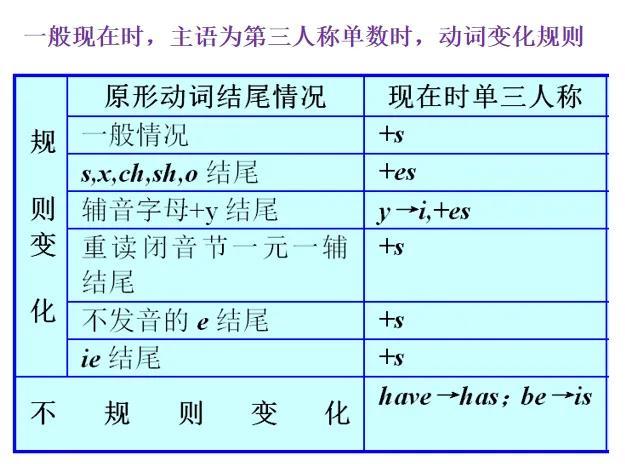一般现在时常用于以下几种情况:
1、表示现阶段经常性或习惯性动作
常与always,usually,often,sometimes,seldom,never,
everyday/week/month/year等时间状语连用。
Eg. 1) We often play football after school.
2) My father goes Beijing once a week.
2、表示客观事实、普遍真理、格言警语:常用于科学性常识或谚语,叙述内容一般不受时间上的限制。
Eg. 1) All roads lead to Rome.
2) The teacher told us the earth goes around the sun.
3、表示主语现在时刻的状态、特征、性格、能力等。
Eg. 1) You look tired today.
2) She can speak English very well.
4、在时间、条件、让步等状语从句中,往往用一般现在时替代将来时。(若引导词为if 时,意思是:如果)
Eg. 1) Whether he goes or not, I will go.
2) If it rains tomorrow, we shall stay at home.
5、表示按规定或者计划将来必定会发生的动作。
常可以这样用的动词有:come, go, begin, start, leave , arrive, return(回来,归还),stop等。
Eg. 1) The film begins at 7:30.
2) The next bus leaves at 11:00.
6、一般现在时用于倒装句中可以表示正在发生的动作, 动词以come, go为主。
Eg. 1) Here comes the bus.
2) There goes the bell.
7、人的心理活动和感官动作一般用一般现在时而不用现在进行时表达,常见动词有:like, love, hate, dislike, want, wish, hope,think(认为),understand, remember, forget, mean, need, hear, feel, see.
Eg. 1) I think it is going to snow.
2) I really hope you can enjoy your stay here.

- 分手了还有联系怎么挽回(分手后还保留了联系方式,还能挽回吗?) 2025-08-13
- 男朋友出轨最好的处理方法(老公出轨前女友怎么办) 2025-08-12
- 成功和情商之间有什么联系?(情商是决定一个人成功的重要因素) 2025-08-12
- 对象要跟你分手怎么留住(这样去留住恋爱中的对方) 2025-08-11
- 男女生之间交往应注意事项有什么(男女生交往要注意这十个点) 2025-08-11
- 这几种性格的女人男人难以驾驭(男人很难驾驭这六种类型的女人) 2025-08-10
- 分手后做朋友有戏吗(真正爱过的人,根本做不到) 2025-08-10
- 瞬间逗女友开心的笑话情话(适合追女生的幽默段子对话) 2025-08-09
网站内容来自网络,如有侵权请联系我们,立即删除!
Copyright © 内百科 鲁ICP备2023048205号-2
